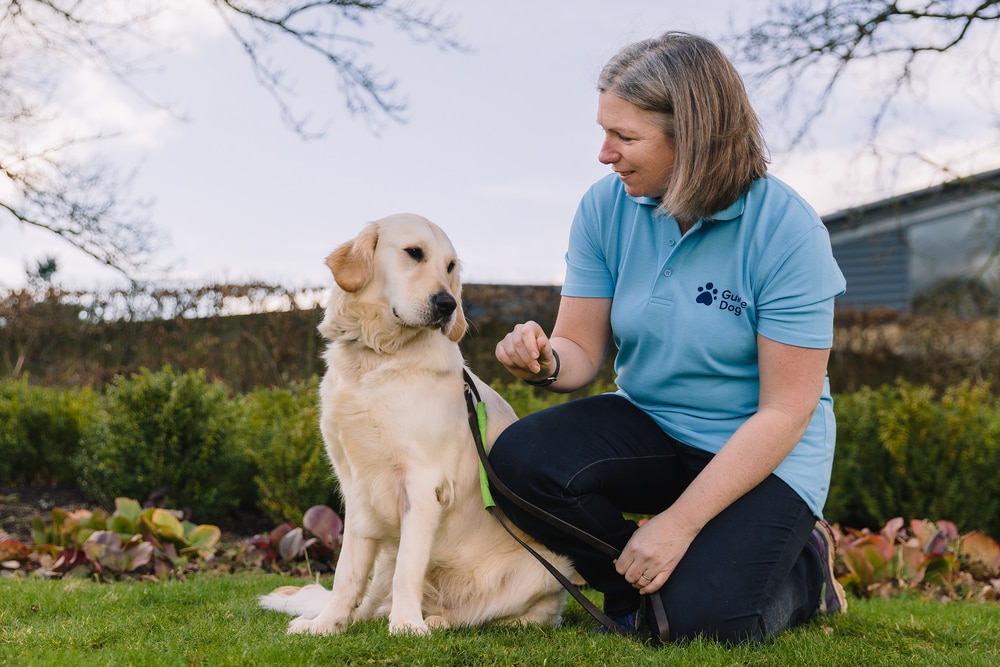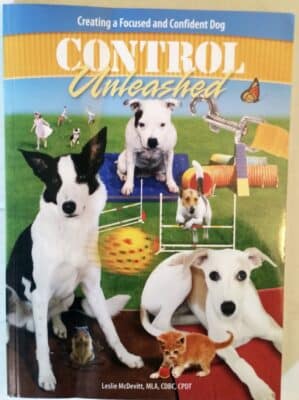behavior modification, counter-conditioning and desensitization, Engage Disengage Training, LAT, Look at that, Look at that dog training
Look at That Dog Training: How to Train Reactive Dogs Effectively.
Look at That Dog Training: How to Train Reactive Dogs Effectively.
Look At That Dog Training: How to Train Reactive Dogs Effectively by Will Bangura, CBCC-KA, CPDT-KA, (Dog Behaviorist), Certified Behavior Consultant.
Training a reactive dog can be challenging, but it doesn’t have to be. Look at That (LAT) Dog Training is a practical, positive reinforcement-based approach to training reactive dogs that can help you get your pup back on track. This article will discuss the basics of LAT Training and how to use it to train your reactive dog effectively.
What is Look at That Dog Training (LAT Training)?
Look at That (LAT) Dog Training is a positive reinforcement-based approach to training reactive dogs. It was developed by Dog Trainer and Behaviorist Leslie McDevitt and is based on operant conditioning principles. LAT Training aims to help reactive dogs cope with their environment by teaching them to focus on the owner instead of their triggers.
Essentially, LAT Training is a two-step process. The first step is to teach the dog to “look” or “watch” the owner when they are presented with a trigger. The second step is to reward the dog for looking or watching the owner. This process helps the dog learn to associate looking at the owner with positive reinforcement, which can help them manage their reactivity.
Benefits of LAT Training.
There are many benefits to using LAT Training to train a reactive dog.
- First, it is a positive reinforcement-based approach which means that the dog is rewarded for their excellent behavior. This helps the dog learn to associate the desired behavior with a reward, making it more likely to repeat the behavior.
- Second, LAT Training helps the dog learn to focus on the owner instead of their triggers. This can help the dog learn to cope with their triggers more productively.
- Third, LAT Training can be used to teach the dog to focus in a variety of situations. The dog can learn to stay focused even when faced with various triggers.
- Finally, LAT Training is a humane and effective way to train a reactive dog. It does not involve punishment or force, meaning the dog is not subjected to unnecessary stress or discomfort.
LAT Training Techniques.
Several techniques can be used to train a reactive dog using LAT Training effectively.
- The first and most important technique is to teach the dog to “look” or “watch” the owner when they are presented with a trigger. This can be done by showing the dog a treat or toy and then asking them to look at the owner. When the dog looks at the owner, it should be rewarded with a treat or toy.
- The second technique uses distractions to help the dog focus on the owner. This can be done by introducing an unfamiliar object into the environment, such as a squeaky toy or a new toy. When the dog looks at the owner, it should be rewarded with the distraction.
- The third technique uses verbal cues to help the dog focus on the owner. For example, the owner can say “watch me” or “look at me” when the dog is presented with a trigger. This helps the dog learn to associate the verbal cue with looking at the owner and can help them stay focused on the owner in various situations.
Understanding the Basics of Look at That Dog Training.
Before beginning LAT Training, it’s important to understand the basics of the process. The first step is identifying the triggers that cause the dog to become reactive. This can be done by observing the dog’s behavior and noting what situations cause them to become reactive.
Once the triggers have been identified, the next step is to create a plan for dealing with them. This plan should include the abovementioned techniques and any other techniques necessary to help the dog stay focused on the owner.
Finally, it’s important to remember that LAT Training is a process that takes time and patience. The dog may not respond to the techniques immediately, so it’s important to be patient and consistent with the training process.
Troubleshooting Common Problems when Training Reactive Dogs.
When training a reactive dog, it’s important to be aware of common problems that may arise. The first common problem is that the dog may become overwhelmed by the environment and overstimulated. This can be avoided by ensuring a calm and quiet environment and keeping the training sessions short and focused.
Another common problem is that the dog may not respond to the techniques. This can be remedied by increasing the reward for the desired behavior and using more distractions to keep the dog focused.
Finally, it’s important to know that the dog may become fearful or anxious while being trained. This can be avoided by ensuring the environment is calm and quiet and not pushing the dog too far outside its comfort zone.
How to Make LAT Training Fun and Engaging.
One of the keys to successful LAT Training is to make the training sessions fun and engaging for the dog. This can be done by introducing distractions into the environment and giving the dog plenty of rewards.
It’s also important to ensure the dog is not overwhelmed by the environment. This can be done by keeping the training sessions short and focused and gradually introducing the dog to more challenging environments.
Finally, ensuring the dog gets plenty of mental stimulation is important. This can be done by introducing new toys and activities into the training sessions and providing the dog with plenty of opportunities to explore its environment.
Tips for Improving Your LAT Training Results.
When training a reactive dog with LAT Training, several tips can help you improve your results. The first tip is to make sure that you are consistent with the training process. You should reward the desired behavior every time and avoid punishing the dog for mistakes.
The second tip is to ensure you are using the correct techniques. This means you should ensure that you use the correct verbal cues, provide the correct rewards, and use the correct distractions.
The third tip is ensuring you are providing plenty of rewards. This means that you should make sure that the rewards are varied and interesting and that they are given frequently.
Finally, you must make sure you adjust your training plan as needed. This means that you should be willing to adjust the plan if the dog is not responding to the techniques or is becoming overwhelmed by the environment.
Look at That Dog Training Tools and Resources.
When training a reactive dog with LAT Training, it’s important to have the right tools and resources to ensure success. Several tools and resources are available to help dog owners with their training efforts.
One great tool is the LAT Training book, which provides an in-depth look at the training process and covers all the basics of LAT Training. This book is an excellent resource for dog owners who are just getting started with LAT Training.
Control Unleashed Reactive To Relaxed Paperback
Finally, several online Look at That video resources from Leslie McDevitt’s youtube channel can help dog owners with their training efforts. These videos can provide helpful tips and advice for those starting with LAT Training.
Conclusion.
Training a reactive dog can be challenging, but it doesn’t have to be. Look at That (LAT) Dog Training is a practical, positive reinforcement-based approach to training reactive dogs that can help you get your pup back on track. This article discussed the basics of LAT Training and how to use it to train your reactive dog effectively. We also discussed the benefits of LAT Training, the techniques used in the process, and how to troubleshoot common problems. Finally, we discussed how to make LAT Training fun and engaging, tips for improving your LAT Training results, and courses to help you perfect your LAT Training. With the right tools and resources, you can be well on your way to having a well-trained reactive dog. In some more difficult dogs, you may need to consult the help of a dog behaviorist, behavior consultant, veterinary behaviorist, or dog trainer.
References.
- McDevitt, L. (2019). Look at that!: a new approach to dog training. Dogwise Publishing.
- Stinnett, J. L., & Kaulfus, P. G. (2020). Evaluation of a look at that training protocol for decreasing leash reactivity in dogs. Journal of Applied Animal Welfare Science, 23(1), 1-12.
- Yin, S. (2010). Low-stress handling, restraint, and behavior modification of dogs and cats. Cattledog Publishing.
- Leibowitz, J. M. (2016). A randomized controlled trial testing the effectiveness of a novel training approach for dogs with separation-related problems. Applied Animal Behaviour Science, 181, 147-158.
- Batson, H. D., & McBride, E. A. (2021). An evaluation of a look at that (LAT) intervention for reducing the aggressive behavior of a dog in a shelter environment. Journal of Applied Animal Welfare Science, 24(1), 1-11.
- Hecht, J., & Horowitz, A. (2015). Looking at dogs: Moving from anthropocentrism to canid umwelt. In Canine Ergonomics (pp. 53-62). Wiley-Blackwell.
- Levy, K. M., & McGilvray, E. (2016). Training dogs to detect an invasive plant. Journal of Applied Animal Welfare Science, 19(2), 182-190.
- Luedke, C. E., Drake, E. A., & Otto, C. M. (2016). A preliminary investigation of clicker training as a treatment for feline overgrooming. Journal of Applied Animal Welfare Science, 19(4), 382-393.
- O’Hara, C. M., Arant, R. J., & Dunn, C. L. (2016). Training domestic dogs to detect the scent of Japanese knotweed rhizome. Journal of Applied Animal Welfare Science, 19(3), 289-303.
- Wan, M., Kubo, H., & Kato, M. (2019). Positive reinforcement training to modify the behavior of captive cheetahs (Acinonyx jubatus) in zoos. Journal of Veterinary Behavior, 31, 38-43.
- “Fired Up, Frantic, and Freaked Out: Training the Crazy Dog from Over the Top to Under Control” by Laura VanArendonk Baugh – This book includes information on LAT Training and other techniques for working with reactive dogs.
- “Control Unleashed: Creating a Focused and Confident Dog” by Leslie McDevitt – This book also includes information on LAT Training and other techniques for working with reactive dogs.
- The Official Control Unleashed website provides information on Leslie McDevitt’s training methods, including LAT Training.
- The Official Fired Up, Frantic, and Freaked Out website provides information on Laura VanArendonk Baugh’s training methods, including LAT Training.
- Online forums such as the Reactive Dogs support group on Facebook or the reactive dog subreddit on Reddit can provide a community of support and helpful tips for working with reactive dogs.
- Online videos on YouTube – Several trainers have posted videos demonstrating LAT Training and other techniques for working with reactive dogs.



